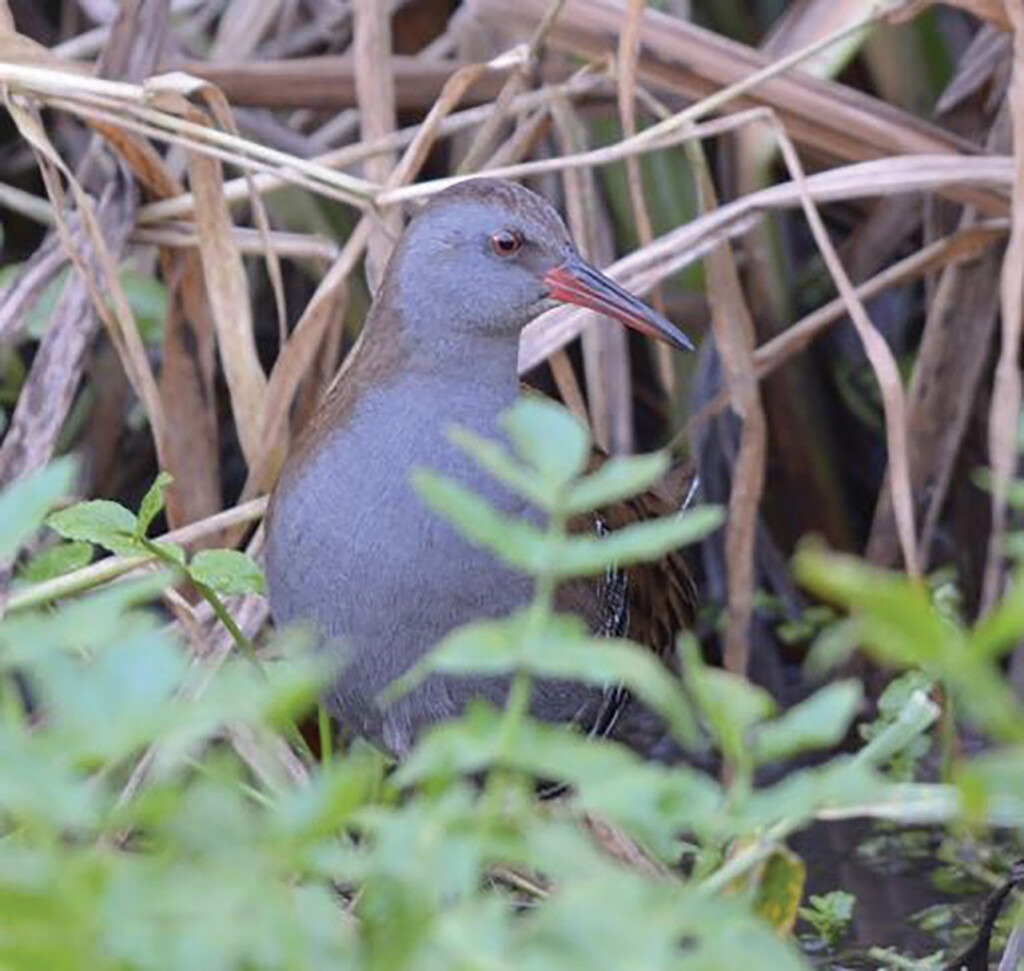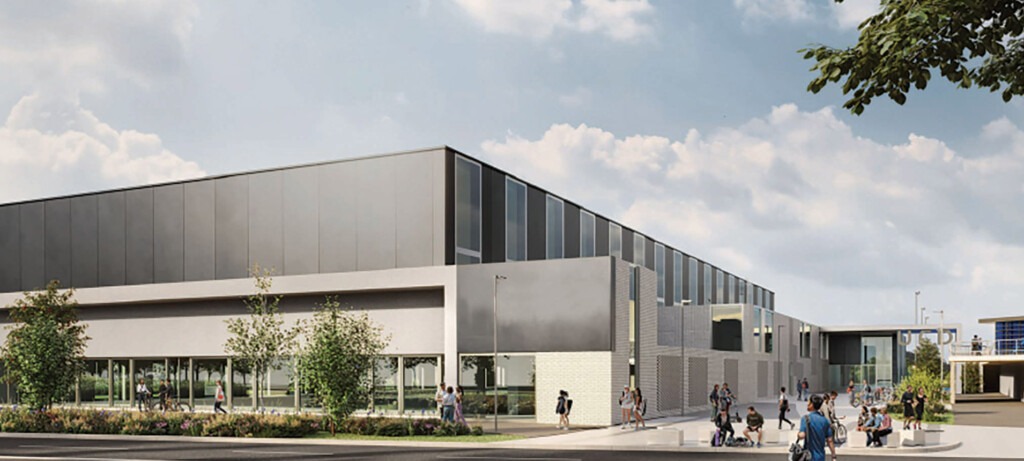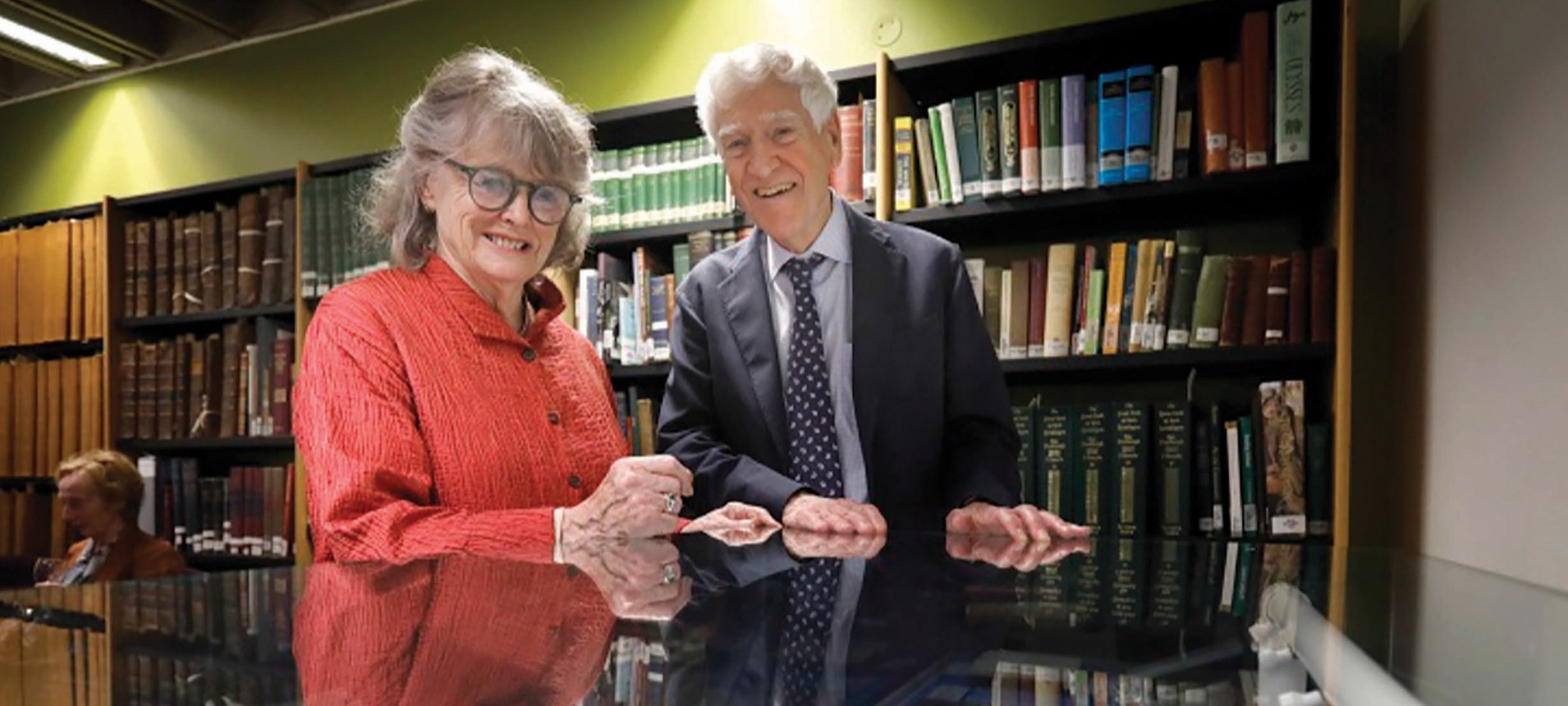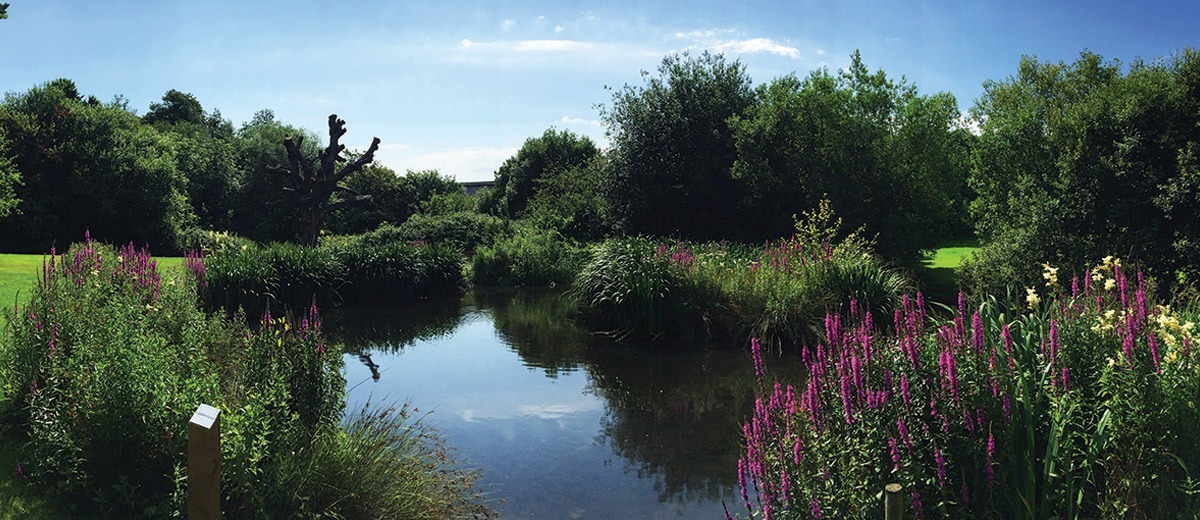Just Add Water
Ponds are extraordinary reservoirs of biodiversity and play a critical role as Ireland faces significant biodiversity loss. More than half of Ireland’s amphibian wetlands have been lost to drainage, industrial peat extraction, pollution and natural senescence in the past century. Naturally vegetated ponds are excellent at carbon sequestration, with small ponds sequestering 20-30 times the amount of carbon compared with woodlands, grasslands and other habitats. UCD Estate Services understand the value of ponds (or lakes as they are known on campus), and are committed to protecting and creating pond habitats.
As most alumni know, UCD has historically been home to breeding pairs of Mute Swans on both the Main and Upper Lakes. Typically, swans start building nests on the islands in March or April, and the cygnets have always been a source of joy on campus.
Specifically designed to encourage biodiversity, the Upper Lake (a former carpark and bus stop that were transformed in 2014) lies between the Engineering Building and Sutherland School of Law. This natural-looking lake has been carefully designed to encourage biodiversity, with marginal planting, cobbled beaches for wading birds, islands for nesting, and deeper troughs of cooler water for fish. It’s a hub of activity where you can watch birds, bees, hoverflies, and Ireland’s biggest dragonfly, the Emperor Dragonfly, in action. The Moorhen is a common sight, as are herons and cormorants, and you’ll see Tufted Ducks bobbing on the surface or swimming underneath.
The Lower or ‘Secret’ Lakes, behind the UCD Veterinary Sciences Centre and UCD Conway Institute, are part of an original watercourse that has been developed into reed beds and ponds and are home to a variety of birds including the wren, Moorhen and the rarer Water Rail.
UCD Estate Services actively supports birdlife with a daily feeding programme. (Please note that alumni are requested to let us know if you spot any frogs while exploring!).
As well as fostering biodiversity, the Lakes are a clever piece of engineering, gathering rainwater from surrounding buildings and attenuating and releasing when required. They are also a resource for the academic community who use them for scientific studies, and a wonderful amenity for students, faculty, staff and the public.
When Belfield became the site of the new university campus, it comprised a number of old estates, each with their own woodland attached. As Ciarán Bennett, UCD Estates Operations Manager, explains: “These formed a natural woodland boundary for the campus. Colleagues such as horticulturist Ciarán Beattie have been instrumental in the management of campus trees and woodlands over time, through initiatives such as the 8km Boundary Woodland Walk and UCD`s annual Tree Planting Programme.”



Is féidir linn ar fad difríocht a dhéanamh do mhaireachtáil ár mbeach agus ár bhfeithidí pailnitheacha trí phlandaí atá oiriúnach do phailneoirí a chur”
Na 10 bPlanda is oiriúnaí do Phailneoirí
Tá leabhrán acmhainní saor in aisce nua curtha amach ag Plean Uile-Éireann um Pailneoirí. Na 10 bPlanda is oiriúnaí do Phailneoirí i Suíomhanna Éagsúla is ainm don leabhrán agus tá 24 liosta ann de phlandaí atá oiriúnach do phailneoirí dúchasacha agus neamhdhúchasacha i suíomhanna éagsúla, gairdíní, bláthchiseáin chrochta, agus locháin san áireamh. Forbraíodh an treoir i gcomhar leis an Dr Noeleen Smyth, ó Scoil na Talamhaíochta agus Eolaíocht an Bhia UCD. “Is féidir linn ar fad difríocht a dhéanamh do mhaireachtáil ár mbeach agus ár bhfeithidí pailnitheacha trí phlandaí atá oiriúnach do phailneoirí a chur,” a dúirt an Dr Smyth. Tá neart fianaise ann go bhfuil na pailneoirí feithide seo, agus pailneoirí eile amhail foichí, leamhain, féileacáin, agus seangáin, ríthábhachtach nuair a thagann sé chuig barra agus plandaí fiáine a phailniú. Tá titim ag teacht ar na pailneoirí seo de dheasca easpa flúirse agus éagsúlacht plandaí bláthanna – lena chinntiú go bhfuil réim chothrom shláintiúil bia á fáil acu, ba cheart go mbeadh siad ábalta iad féin a chothú ar phailin agus neachtar ó raon bláthanna ó luath san earrach go dtí an fómhar. Aimsigh an treoir ag www.ucdestates.ie/green-campus/biodiversity
Fionnachtain Lágair Shuntasach
I bhfionnachtain iontach, tháinig mac léinn géineolaíochta sa tríú bliain, Stephen Allen, ar chineálacha giosta darb ainm Saccharomyces eubayanus ar champas Belfield níos luaithe i mbliana. Is tuismitheoir de Saccharomyces pastorianus é ceann den dá ghiosta seo agus úsáideadh an giosta bríbhéireachta sa Bhaváir ag deireadh na Meánaoiseanna, tráth a d’aistrigh an réigiún ó leannta a dhéanamh chuig beoracha cosúil le lágar.
Níorbh fhios roimhe seo conas a thosaigh na grúdairí Gearmánacha sa 13ú haois ag baint úsáide as an ngiosta hibrideach, toisc nár bhfuarthas S. eubayanus ach i gCríocha Mheiriceá agus san Áise. Tugtar le fios ó fhionnachtain shinsear an speicis giosta seo ar deacair teacht air agus atá ag fás ar ithir na hÉireann go raibh an giosta le fáil i ndeisceart na Gearmáine i rith dheireadh na Meánaoiseanna, agus tá seans ann go bhfuil pobail an-chríonna fós i bhfolach in áit éigin i gcoillte na Baváire agus in áiteanna eile.
“Trí theacht ar S. eubayanus san Eoraip tá Stephen tar éis ceist sheanbhunaithe a fhreagairt maidir le cad as a dtáinig giostaí lágair,” arsa an tOllamh UCD Geraldine Butler, príomhúdar páipéir i dTaighde Giosta Chónaidhm Chumainn Mhicribhitheolaíochta na hEorpa, arna fhoilsiú ag Oxford University Press. “Cuirfidh an fhionnachtain Éireannach fuinneamh le cuardaigh le haghaidh aonraíoch giosta cosúil in áiteanna eile san Eoraip … is sampla iontach í an fhionnachtain de theagasc a bhfuil taighde mar bhonn aige.”
Téigh ar shiúl ealaíne timpeall an champais
Is cuid de líonra de shuiteáin ealaíne a choimeádtar go cúramach iad na dealbha atá ar fud Belfield agus tugtar Cosán Dealbhóireachta UCD orthu. D’fhorbair Ruth Fergusan, Coimeádaí Theach Newman UCD, agus an Dr Paula Murphy, Scoil Stair na hEalaíne agus an Pholasaí Chultúrtha UCD, an Cosán ar dtús. Tá oibreacha ó ealaíontóirí a bhfuil clú áitiúil agus idirnáisiúnta orthu ar an gCosán, amhail Paddy Campbell (Wind and Water), Carolyn Mulholland (Tremor) agus Jill Pitko (Joie de Vivre).
Is féidir leat Chroma a fheiceáil in Ionad Eolaíochta Uí Bhriain, agus Judgement, dealbh chré-umha ag Rowan Gillespie, a léiríonn beirt fhear i mbun comhrá domhain, díreach lasmuigh den tslí isteach chuig Scoil Dlí Sutherland. Tá a scéal féin le hinsint ag gach ceann de na dealbha seo. Tá eolas (agus grianghraif ó Vincent Hoban) ar na dealbha, léarscáil idirghníomhach san áireamh, ar fáil ó shuíomh gréasáin Leabharlann Dhigiteach UCD. digital.ucd.ie.


Creative Futures Academy
A new Creative Futures Academy (CFA) sees academics across three institutions – UCD, NCAD and IADT – work together with industry experts to identify the future skills and knowledge needed for the Irish creative and cultural sectors. It is the first collaboration of its kind in higher education in Ireland, and the project is funded by a €10 million grant from the Higher Education Authority’s Human Capital Initiative.
Courses available include those in the areas of art and ecology; service design; data visualisation; user experience design; writing for stage and screen, as well as design thinking and others. A range of study programmes will be available, from short continuing professional development (CPD) courses, to postgraduate certificates and bachelor’s and master’s degrees.
Capital projects at each of the three institutions involved are also being developed. At UCD, the Blackbox studio and media lab, due to open later this year in the former Dramsoc Theatre in the Newman Building, will support teaching in drama, music, film, creative writing and digital content creation.
Micro-Credentials
UCD now offers more than 80 short microcredential courses in multiple sectors including Agriculture and Food, Data Science, Financial Mathematics, Financial Services, Health Data Analytics, Law, and Medicine and Health. Micro-credentials, ideal for those who may not have the time to engage with longer programmes of study, and an excellent choice for professionals looking to upskill, pivot or change their career, provide learners with globally recognised accreditation and the possibility of using that credit towards a UCD award, such as a UCD professional diploma or master’s. UCD Alumni can avail of a 20 per cent discount on a number of microcredentials. See www.ucd.ie/microcredentials/

Coming Soon: UCD’s New Sport & Performance Complex
UCD has been granted planning permission for a three-storey multipurpose sports hall, Tennis Centre and music performance centre. The facility combined will also serve as an assessment centre for end of term exams with capacity for 2,250 students.
The development will also provide two new UEFA-standard artificial football pitches, six new five-a-side football pitches, and an artificial half-size hockey training pitch. The project, estimated to cost more than €87million, will be funded by the annual €254 student levy which has in the past funded existing sports and student facilities and will now support this new development.

Right on Track
UCD’s brand new state-of-the-art Athletics track is now open and is the home of UCD Athletics Club, the UCD Triathlon Club, UCD School of Public Health, local schools, businesses and clubs. UCD Athletics Club has signed up to the Sport Inclusion Disability Charter and the track will be key to supporting athletes with disabilities.

A Neurodiverse Friendly Campus
Neurodiversity describes the wide variation in human brain functions relating to sociability, learning, attention and mood, and encompasses many common conditions traditionally labelled as Autistic Spectrum Disorder (ASD), Attention Deficit Hyperactivity Disorder (ADHD), dyslexia and dyspraxia. UCD acknowledges and respects all types of brain functioning and implicitly understands that each and all can contribute to the tapestry of humanity given the correct conditions. The fact that some types of brain functioning are more common in the majority of people is not assumed to imply deficit in the minority.
As part of its continuing work to make UCD a neurodiverse-friendly environment for students and staff, UCD Neurodiversity Working Group’s research project, Making UCD a Neurodiversity Friendly Campus, led by Associate Professor Timmy Frawley in UCD School of Nursing, Midwifery and Health Systems, is carrying out a review with a view to making recommendations for enhancement. A literature review, a sensory audit of the Belfield campus, a survey of both staff and students and focus group discussions are now complete, and preliminary findings are currently being reviewed
Classic Examples
New additions to UCD Library Special Collections are worth a visit
Adding To The James Joyce Archive At UCD
UCD Special Collections recently acquired new letters that add to the Joyce material in the C.P. Curran-Helen Laird collection. Joyce and Curran attended UCD, graduated together and remained lifelong friends.
In addition to a 1904 note from Joyce to Curran arranging to meet in Bewleys, the acquisition included a letter to Curran in 1917 while Joyce was in Zurich working on Ulysses. In this letter, he describes how he is “recovering from a painful – and this time dangerous – illness of the eyes”. This is significant as it may be the first description by Joyce of his eye trouble, which would afflict him for the rest of his life.
These letters are a significant addition to the Curran-Laird collection of correspondence, books, photographs and ephemera in UCD Special Collections, which was deposited in 1972. The original correspondence collection features more than 400 letters and includes a further 23 letters from Joyce to Curran as well as many written to Curran by Joyce’s family, associates and friends. This collection is a valuable resource for Joyce scholars throughout the world, and is available to view on the UCD Digital Library.
We urge people to explore these fascinating letters in UCD’s Digital Library, to see Joyce’s words in his own handwriting,” said Dr Sandra Collins, UCD University Librarian.
Curran (1883-1972), a lawyer and historian of 18th-century Dublin architecture, sculpture and plasterwork, became a great supporter of Joyce. Curran was married to actress, costumier, teacher and suffragist Helen Laird (1874-1957) and a vibrant and diverse group of artists, historians, playwrights, actors and writers attended the couple’s famed salons in Rathgar. Curran was a model for the character Gabriel in Joyce’s The Dead. He is also mentioned by name in Ulysses, where Stephen Dedalus recalls that he owes him ten guineas. www.ucd.ie/specialcollections


James Joyce.
Heaney agus na Clasaicí
Tá taispeántas nua, ‘Heaney & Na Clasaicí’, tar éis oscailt i Leabharlann UCD. Pléann an taispeántas obair Seamus Heaney trí thuiscint litríocht Ré na gClasaicí. Tá rogha d’eagráin theoranta agus cóipeanna sínithe obair bhuaiteoir Ghradam Nobel, a bhronn alumnas UCD agus mac léinn Yeats, an Dr Joseph Hassett, ar Shainchnuasaigh UCD, sa taispeántas. Is dlíodóir Gael-Mheiriceánach aitheanta agus seanchara chlann Heaney é an Dr Hassett.
Pléann an taispeántas ról an domhain chlasaicigh in obair Heaney. Coimeádann an Dr Hassett, i gcomhar le hEvelyn Flanagan agus Kathryn Milligan ó Shainchnuasaigh UCD, an taispeántas.
Is urlabhraí ar son na n-ealaíona agus tacaí scríbhneoireacht na hÉireann é Joseph agus, in 2022, bhronn an tUachtarán Ó hUiginn Gradam Scothsheirbhíse an Uachtaráin air mar aitheantas ar a obair ar son na hÉireann agus ar son phobail na hÉireann thar lear.


